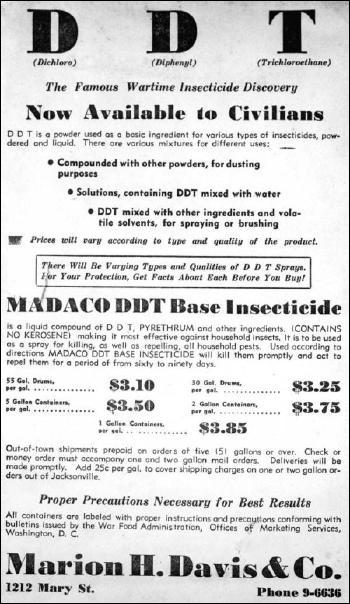
DDT (dichlorodiphenyltrichloroethane) was widely used as a pesticide to control insects in agriculture and insects that carry diseases such as malaria. DDT is a white, crystalline solid with no odour or taste. DDE (dichlorodiphenyldichloroethylene) and DDD (dichlorodiphenyldichloroethane) are chemicals similar to DDT that contaminate commercial DDT preparations. DDE has no commercial use. DDD was also used as a pesticide, and in one form it has been used to treat cancer of the adrenal gland.
DDT enters the environment when it is used as a pesticide; DDE and DDD enter the environment as contaminant or breakdown product of DDT. All three compounds are rapidly broken down in air, with a half-life of two days, but stick strongly to soil, where the breakdown is much slower. DDT in soil is mostly broken down to DDE and DDD by microorganisms; half the DDT in soil will break down in 2 - 15 years.
DDT, DDE and DDD do not dissolve easily in water. DDT, and especially DDE, build up in plants and in fatty tissues of fish, birds, and other animals. Birds affected by DDT build-up lay eggs with very thin shells that break during ,resulting in the loss of offspring.
In the 1970s widespread damage to wildlife led to a ban on the use of DDT, DDE and DDD in most industrialized countries, but is still used in some countries.

Ibis eggs that failed to hatch as a result of DDT. Photo by George Silk, TimePix.

An advertisement for DDT as insecticide against household pests; from the Tallahassee Democrat of Florida, c. 1946. (Florida State Archives)